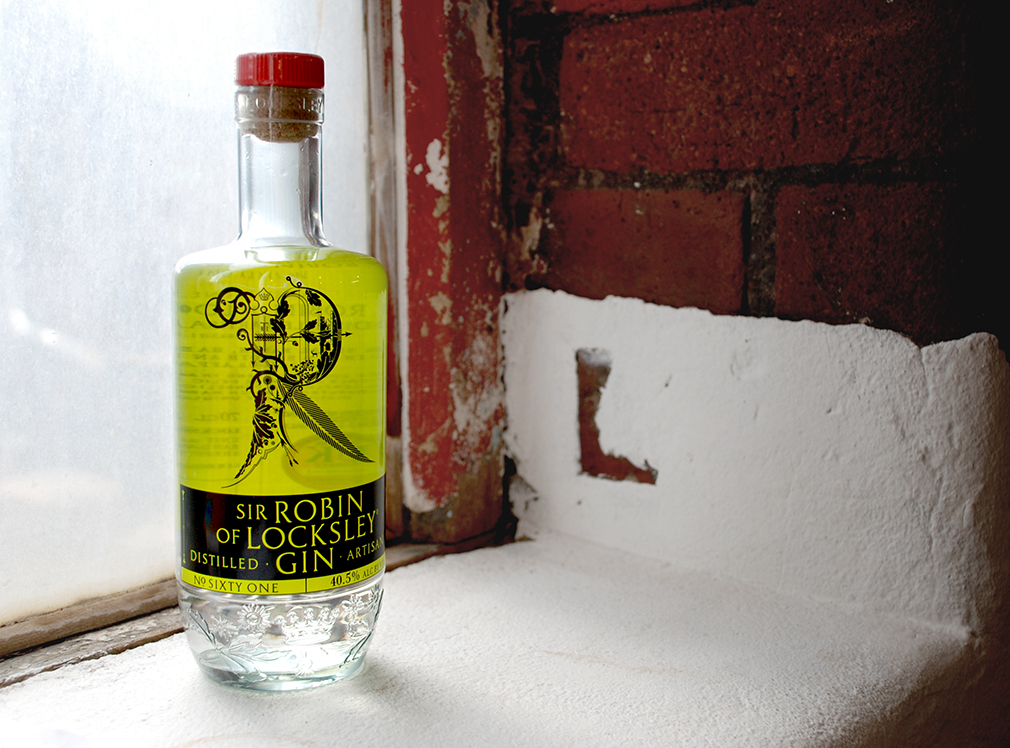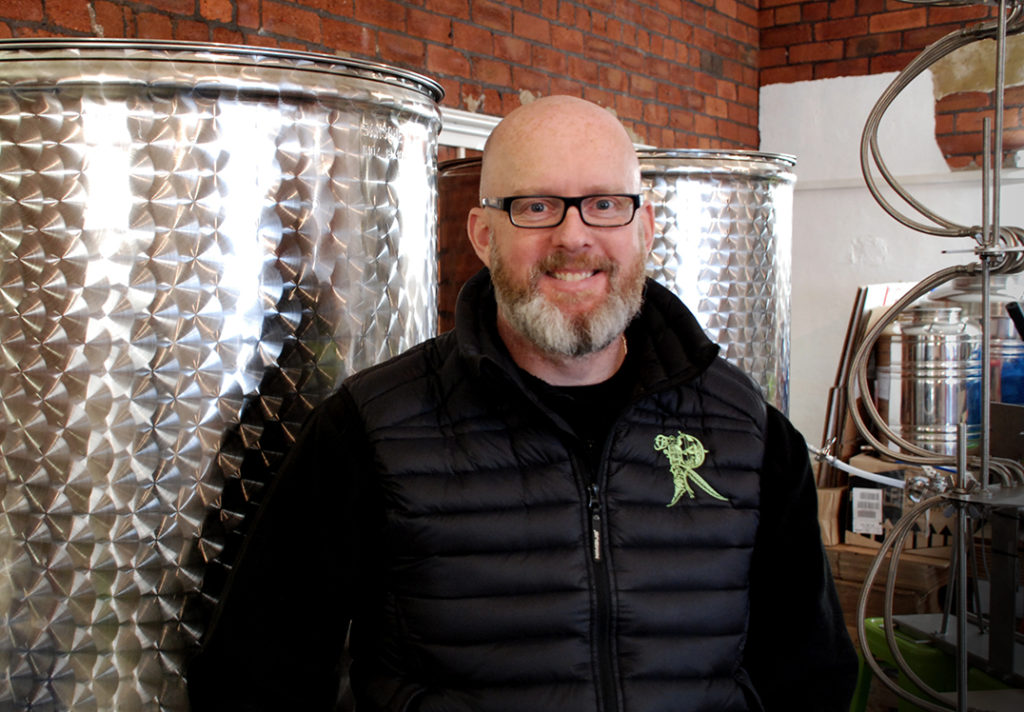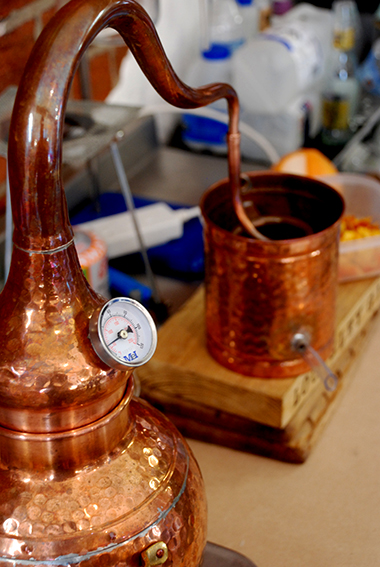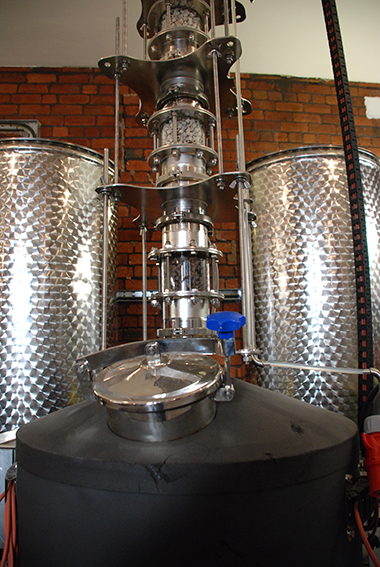Sir Robin of Locksley
Gin forged in the birthplace of stainless steel

A hundred years ago in Portland Works, a red brick factory in Sheffield, Harry Bearley commissioned R. F. Mosley & Co to make the first cutlery with his invention, ‘rust proof steel.’ Facing an initially sceptical market, Ernest Stewart the cutlery manager suggested a snappier name for the shiny alloy, and christened it ‘stainless steel.’
Today, John Cherry is enacting his own method of alchemy in Portland Works, realising a life long dream of setting up a distillery. John spent the last couple of decades honing his palette working in luxury hospitality with The Orient Express in France and then in New York helping the likes of Liam Neeson and Vanessa Redgrave choose their wines. He returned to his native Sheffield in 2013 with his young family and created the Locksley distillery. A year later they launched their first gin, Sir Robin of Locksley, named in honor of the local scoundrel-hero who’s alleged birthplace is a couple of miles away in the Locksley Valley.
We caught up with John in his industrially historic home to see, and taste, his take on the age-old juniper spirit. So what is so special about Sir Robin of Locksley gin? “It’s different, really different. It’s sweeter and quite unusual,” John enthuses. “Sweet, but not super sweet; in between a London and an Old Tom gin. We developed it to bridge the gap so you can happily drink it straight if you want to. I don’t think there is anything out there really like Sir Robin of Locksley, which is a good thing. A lot of gins today seem to be going for a dry style, which is fine. But there is a lot of gin out there and I think our flavor brings something new to the customer and gives us a little bit of a competitive edge, which is good!”

John invested over eight months perfecting his blend of botanicals. Experimenting on the kitchen table in a small alembic still, a replica of an 8th century Arabian design. He explains, “In the recipe development phase we worked through 75 recipes and 29 different blends, so 104 variations in all.”
The ingredients were selected by trial and error. “The whole 75 recipes have got al lsorts of things in. You start with something that you think will work and then you can amplify and add to it. It’s almost like a family tree, if you look at my tasting notes they will go off on one route and spread out with different ideas from that and if it doesn’t work out then you kind of back track and find where it does work and then go off on different avenue and explore that” John recalls. “I was trying to find things that were not necessarily used, to create something unique. There were a few surprises along the way like sage which when distilled tasted like wasabi and route dandelion gave very pungent burnt rubber aspects. To find what you’re looking for you’ve got to be passionate about it. It was a lot of fun and games!”


John’s experience in high quality shows in his attention to detail, “we played around with botanicals and how they worked with different proofs, alcohol strengths. Even playing around with different waters. Spring water, bottled water, even Sheffield tap water. If there was a storm or something like that it would change the mineral components of spring water and the flavor compounds in the gin distiller could attach to different mineral compounds and you get allsorts of flavors given out – good and bad flavors. You probably wouldn’t be able notice it massively but certainly if you put two side by side you would and definitely if you are tasting one from six months down the line there would be a difference.” The distillery now uses demineralised water to guarantee an exact consistency in our production.
The winning avenue of this gin lineage combined five familiar gin botanicals: juniper, coriander, cassia bark, angelica and licorice root. John gave his personal twist to this blend with infusions of pink grapefruit, elderflower and dandelion. “We buy the pink grapefruit fresh then hand peel and dry the peel ourselves. It takes about four to five days to dry completely. The elderflower we buy fresh or frozen from a farm in Lincolnshire and the dandelion is from a Yorkshire company. We have hand sourced dandelion and dried it ourselves in the passed, but it’s tricky to get right. It can be quite damp and smells a little like grass, it’s quite herbaceous.”
The result of all this hard work is a wonderfully crisp, fresh, versatile distilled gin. The flavors are deliciously smooth but distinct enough to hold their own mixed with a tonic or as a component for cocktails and can be equally enjoyed simply poured over ice and served with a slither of grapefruit. The delicate blend of base flavors warm the palate then the grapefruit kicks in, washing over you like a sweet citrus wave.
“We think about gin a lot!” laughs John, “what direction we want to go in, trying to do something that would have a good export value as well as appealing to the UK market.” He has been patient, carefully growing the brand, “because we are small we can work on customer service and build relationships.” Using contacts made in his previous experience abroad and increasing connections closer to home, Sir Robin of Locksley current availability is mostly limited to those two great metropolises of the world, New York – and Sheffield… Making it nearly as elusive as its outlaw namesake. It is a small batch, hand raised gin but this being the modern world, you can easily track a bottle down on the web.
As the Locksley name suggests, John prides himself on his local roots. He sources his botanicals as locally as possible and chose the location for the distillery with as much meticulous care and consideration as he has put into every step, and every drop, of Sir Robin of Locksley gin. The success of Harry Bearley’s alloy, protecting the world’s cutlery from tarnishing and various patient claims meant production soon out grew Portland Works. Following the decline of its industrial heyday and half a decade of neglect the Grade II* listed building now houses a growing array of artisans ranging from jewelers to bicycle makers, musicians to high-tech CNC and of course, a distillery. John’s neighbors, PML Plating Ltd are one of the last independent family owned plating companies. When they are not silver plating trumpets for the Queen they still carry on Harry Bearley’s legacy, making stainless steel cutlery.
Locksley Distilling – www.locksleydistilling.com
Share article with:
Related articles which maybe of interest
© By The Sky Design 2024









